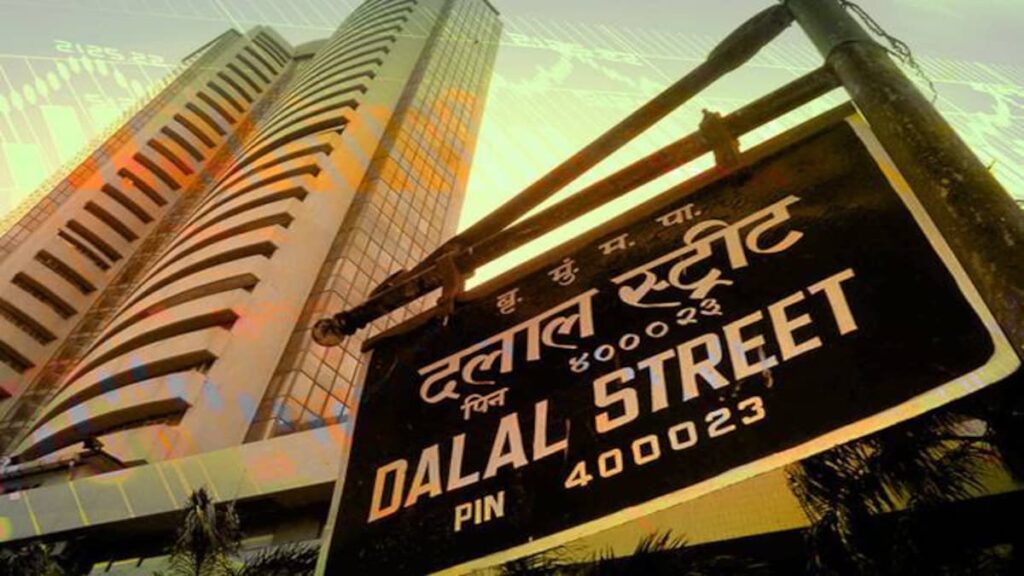The first glimpses of a Stock Broking Industry in India can be traced back to the late 18th Century through the East India Company trading in loan securities, and by 1830s shares of Bank and Cotton presses were being floated in Bombay. The Companies Act introduced in 1850 saw concepts such as limited liabilities and corporate securities being introduced to Indian investors.
Started by a group of 5 brokers trading under a banyan tree in front of Mumbai town hall, was the first form of stock exchange in India (albeit informal). It had to be relocated multiple times due to the rapid increase in the number of brokers until 1875 when they finally settled upon a permanent location and named the organisation “The Native Share & Stock Brokers Association” [precursor to Bombay Stock Exchange (BSE)]. The Government of India officially recognized Bombay Stock Exchange under the Securities Contracts Regulation Act on August 31, 1957.
The Indian Capital market and its participants, however, did not see much in the form of remarkable reforms or policies being implemented which saw a period of stagnation and investor loss of confidence in the stock market due to a lack of transparency between the exchange, broker, and the retail investor.
SEBI introduces major reforms
Securities and Exchange Board of India (SEBI) was accorded statutory powers by the Parliament of India, through the SEBI Act, 1992. The level of autonomy granted by the act allowed SEBI to set forth major reforms and policies relating to the regulation and compliance of the Exchange Markets and its participants.
The transparency and protection of investor funds offered by SEBI along with a move towards online trading (1995 onwards), faster settlement of trades, and easier verification for accountability led to millions of Indians being drawn to the stock markets.
The Emergence of Online Trading
The digital transformation in India has impacted almost every sector or industry in the country, and the broking industry is no exception. The National Stock Exchange of India (NSE) was the first exchange in India to introduce an electronic trading facility enabling faster trade execution and increased transparency along with introducing its proprietary fully automated screen-based trading system NEAT (National Exchange for Automated Trading). This was followed by BSE introducing its own version to facilitate automated screen-based trading, BOLT (Bombay Online Trading System). The advent of online account opening, real-time trading updates, and checking one’s portfolio digitally, among other things brought in the much-needed traction and capability to handle the growing volume of the market.
By the early 2000s, the rise in India’s internet penetration rate gave a big boost to online trading, in terms of volume. Clarity, faster speeds, and better access to trading facilities meant that retail investors could now make trading decisions based on live updates, resulting in the discovery of more opportunities for wealth creation and studying the market movement.
The spread of the internet and the ease of access to information for investors also meant that the stock-broking industry saw a shift from brokers predominantly fulfilling an advisory role to now being more of an executor of trades and transactions at the behest of their clients.
The internet and its use is a double-edged sword, on one end it significantly changed the pace and speed of the flow of information to and fro the capital and financial markets, on the other hand, it opened up a lot of vulnerabilities to cyber threats and cyber-attacks.
The passing of the Information Technology Act, 2000, introduced regulations governing the interface and protocols of all online transactions. All stock exchanges and their trading partners were mandated to comply with the regulations of SEBI for all activities conducted over the Internet.
The passing of such regulations and the implementation of strict compliance meant that the investor’s safety concerns were being addressed, resulting in an increased level of trust and confidence in SEBI.
The Emergence of Mobile Trading
The advent of 3G technology during this time was perfect for financial and capital markets to capitalise upon. The added bandwidth and technological capacities along with the introduction of real-time trading apps meant that traders could now track the price of stocks, ETFs, currencies, etc., from any corner of the globe.
Buying and selling stocks through mobile apps was growing so fast in popularity that it had become a staple of every stock broker to launch their own app providing features such as a full trading experience, and detailed charting, among other things.
Stability Evokes Intense Competition among Brokers
By this point in time, the Indian markets had advanced to a stage where stability and reliability were assured. Derivatives were traded on integrated platforms, while the trading ecosystem with over 4000 brokers at the time was backed by automated trading systems and other instruments under the regulations of SEBI.
This level of stability and strengthening of security on mobile apps through simplification of broker-trader interaction meant that stock-broking firms had to do more than just be an executor of transactions to stay relevant and in demand. This resulted in a shift in the stock-broking industry where clients were offered services such as analytics reports from research analysts and advisories from market experts along with housing in-house research teams to help the traders make informed decisions.
Discount Brokers Enter the Industry – Regulations Tighten
Due to the rising competition and undercutting among brokers and stock-broking firms, some brokers started charging zero fees for certain types of trades or transactions. Although unclear on how the costs were covered for such discounted or free offers to the customer, it did disrupt the industry as a lot of financial services, previously considered premium, were now being accessed for free.
Amidst the increase in the volume of brokers and stock-broking firms, SEBI tightened its policies and regulations regarding investor protection. The laws entailed increased transparency and accountability including enhanced disclosure requirements for stock-broking firms to make sure that traders always had knowledge of where their funds were invested in.
On account of this, it is important to break down the two types of stock brokers in India:
- Full-Service Stock Broker: Stock brokers who use their financial expertise and experience to help clients make informed decisions and help on their path to build their portfolio. In return, they charge a brokerage fee for the services and consultation provided.
- Discount Broker: Discount brokers do not provide any financial services to the clients and only offer a platform through which the client and trade (buy or sell) securities. In return, their fees are considerably lower.
SEBI also introduced the Investor Protection Fund (IPF) to set up a platform for trader grievances against brokers who fail to pay. The regulatory body continues its strive to educate the public through investor education, as it serves as the best form of investor protection in the securities market.
Pandemic Shuts Down the World
The Covid-19 pandemic resulted in millions of people losing their income as the economy of the country (and in a sense, the world, for that matter) and its functioning seemed to have come to a grinding halt. A lot of investors had partially or completely lost their money due to that specific industry of investment experiencing a massive slowdown due to the pandemic. During this time, the importance of diversifying one’s portfolio and concepts of having foundations on how to invest in a way to always have fall back or savings funds were being noted and promoted among the public due to the adverse times upon them.
Attractive stock prices brought in a lot of new investors, a significant portion of them being young, who were now looking at the market to create wealth and understand the concepts of wealth creation and management through the market. The perceptions changed as people started seeing stocks and mutual funds as methods of wealth creation and were no longer completely risk-averse or satisfied by the interest rates offered by a savings account or an FD.
In FY 2020, the number of demat accounts opened was in the order of 4.7 million.
In FY 2021, the number of demat accounts opened was 14.2 million!
This tremendous influx of traders onto the market exerted an upward pressure resulting in a positive gain for the Sensex (which took a sharp dip at the start of Covid).
How can you become an investor?
Investing in the Indian equity market requires three types of accounts:
- Bank Account
- Demat Account
- Trading Account
A Demat Account can be opened with any of the two registered Depository Participant (DP), NSDL (National Securities Depository Limited) and CDSL (Central Depository Services Limited), while Trading accounts require a SEBI Registered broker.
A new bank account is to be opened and then linked to the demat and trading accounts or one can avail of the features of two-in-one or all-in-one accounts offered by brokers which combines the two or all three types of accounts into one single account.
Trading and Demat application forms are available online and require the bank account details, photograph, photo of signature to be uploaded, and an e-sign through NSDL. Applicants who are not KRA registered need to upload additional documents which include address proof, PAN card, and In-Person Verification video (IPV).
Enhancements in Technology
Advancement of technology is a vital function to the growth and prosperity of any industry. In the modern era, the growth in the usage of APIs (Application Programming Interface) has allowed for the process of account opening, funding, trading, account management, and order execution to be seamless and transparent between a broker and a trader.
Technologies such as cloud storage have also helped fuel the growth and scalability of operations by reducing the costs involved. Cloud storage being digital offers a higher degree of flexibility and reliability than traditional methods while not compromising on the security front.
Automation of certain processes is an ongoing venture that aims to deliver better communications and market analysis to the client by reducing order latency and expanding the broker’s trade volume capacity. Emerging technology coupled with innovation will continue to streamline the broker-trader relationship and interactions for the possibility of more value-added services in the future.
Artificial Intelligence (AI) and Machine Learning (ML) technologies are the current leaders of the innovative front with a possibility to completely revolutionise the whole system in the coming decades.
Even though it is still at a relatively early age, AI is already playing a significant role in the financial industry by:
- Analysis of user behaviour and patterns for customized results of market research and news
- Analysing investor portfolios and financial goals
- Offering a customised template based on a client’s risk tolerance
- The ability to identify hidden patterns gives AI-powered trading systems an edge in predicting market shifts and trends
What Does the Future Look Like?
The broking industry as a whole seems to be on the brink of undergoing major changes and shifts in what the clients want. Small traditional brokers are not achieving the prosperity they’d like due to the falling yields and strict regulations and compliance orders governing them. On the other hand, large traditional brokers are being forced to adjust their business model due to the emergence of discount brokers. Although the discount broker model is disruptive, the additional compliances mandated by SEBI have made it harder for discount brokers to keep their prices low while combating compliance costs.




